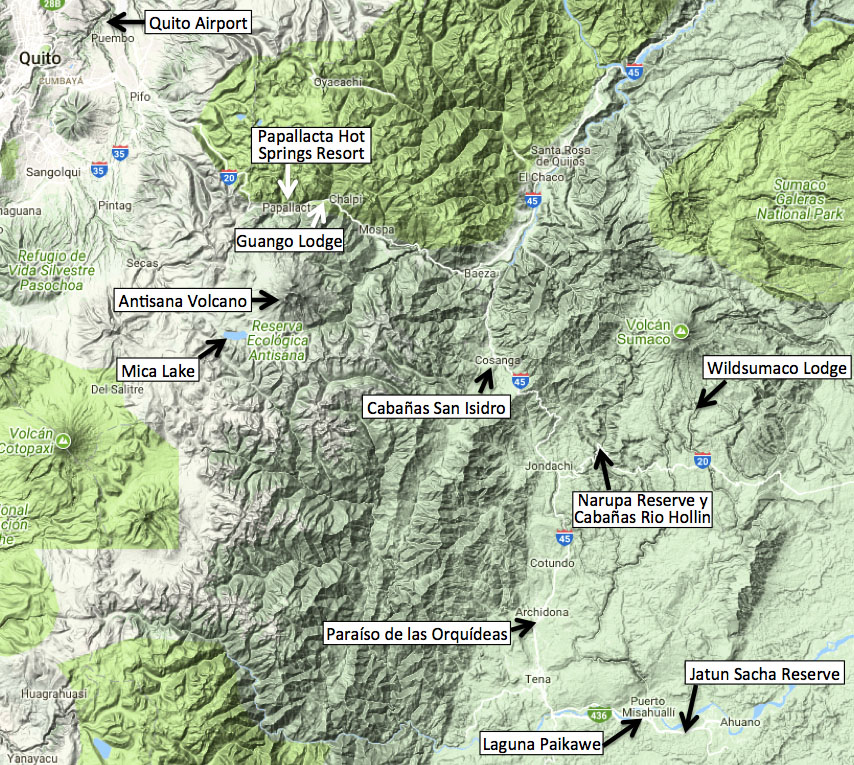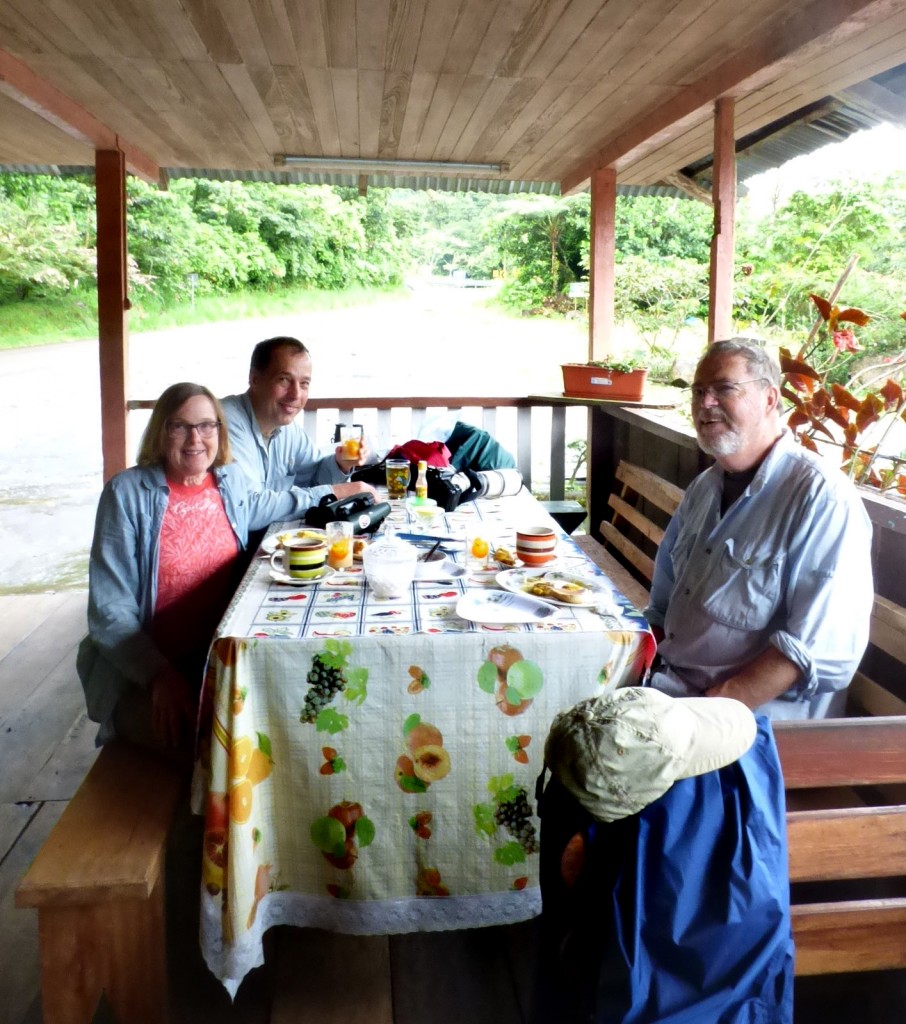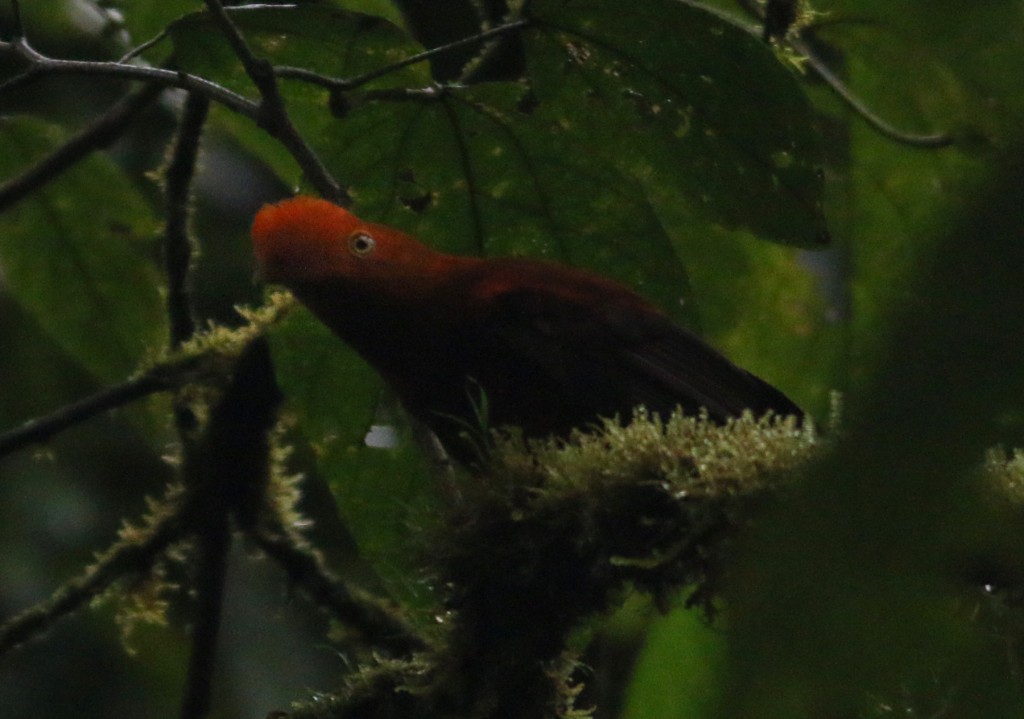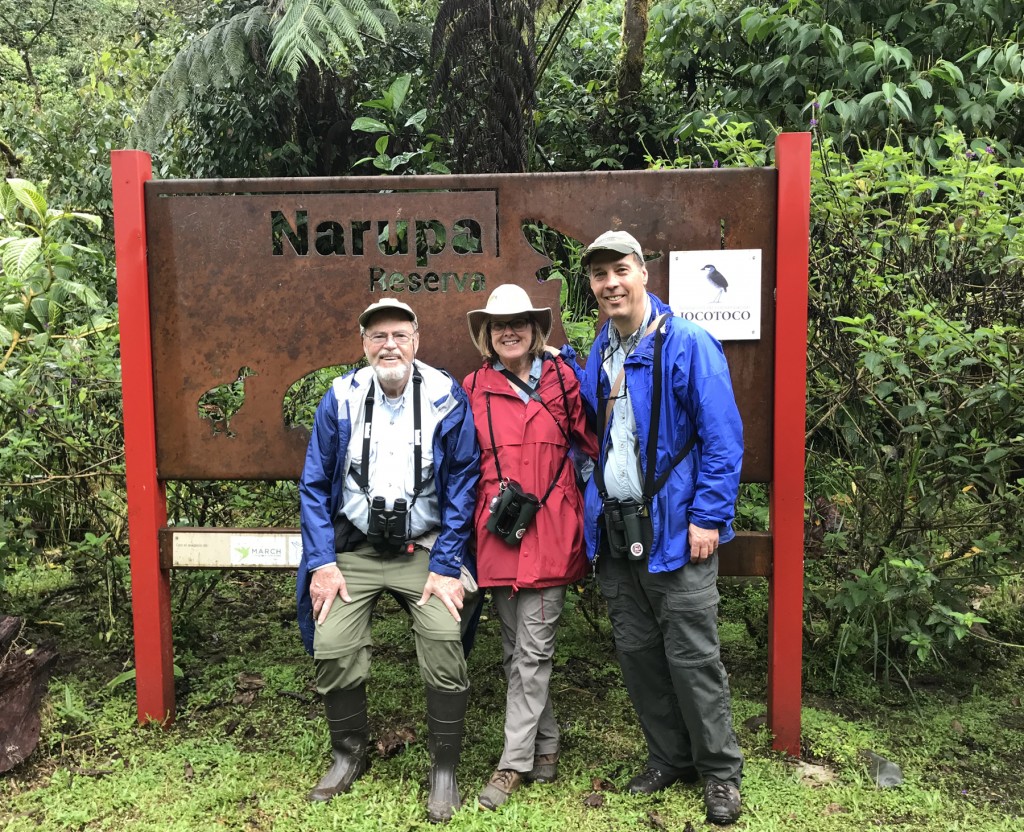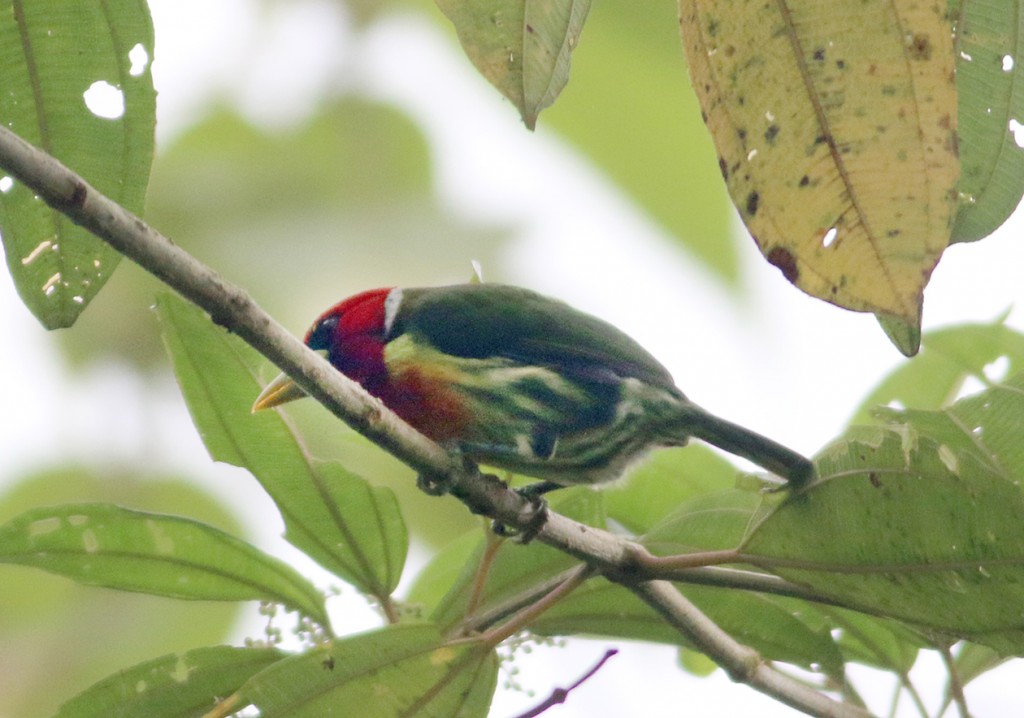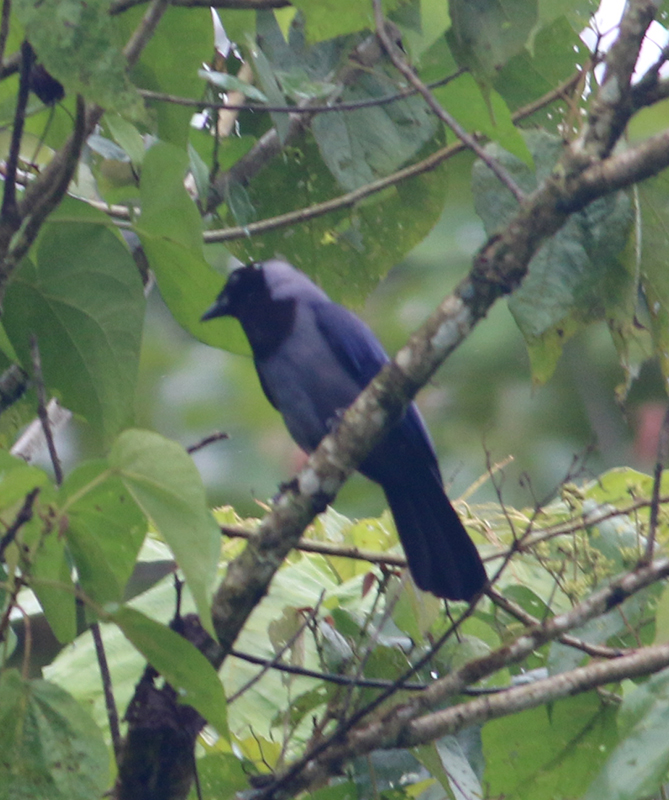A few days ago the Birdquiz.net crew returned from a 14-day trip to Ecuador, birding the east slope of the Andes accompanied by my friends Pete and Jeanine. This was a mostly do-it-yourself trip where we hired local guides on only two of the fourteen days, so let me start with an overview of our route and some logistics. We wanted to try a self-guided tour, because analogous trips that I took five years ago to the western slope of the Andes and last year to Colombia and Puerto Rico worked incredibly well, and as we shall see in a moment and in follow-up blog entries, the results were terrific this time too.
A birding trip to either the east or west slope of Ecuador is relatively easy to arrange and to do on your own, because there are sufficient birding lodges, the primary roads are in excellent condition, and very little city driving is required. The easiest way to increase the number of birds seen on a trip like this is to change elevation every few days. A simple two hour drive on the east slope can easily result in a 3,000 – 4,000 ft change in elevation and a brand new set of birds. Fortunately, on the east slope there are three excellent lodges that cater to birders and are spaced conveniently at different altitudes along the main highway, with Guango Lodge at 8,860 ft, Cabañas San Isidro at 6,800 ft, and Wildsumaco Lodge at 4,900 ft. These are the same three lodges that typically are used by the major birding tours to the area, so despite being a self-guided trip, the quality of our lodging and birding locations was top-flight. Our plan was to stay at these three lodges for 2-3 days each, and then expand a bit further downslope towards the Napo River to search for lower-altitude Amazonian basin species, and spend the final day in the high altitude paramo, organizing the tour such that we work our way upslope to acclimate to the elevation as the trip progressed. Because fourteen days of non-stop birding might be too intense even for me (some people mistakenly believe that the phrase ‘too much birding’ is a foreign concept for me), we interspersed breaks at two hotels where we could relax a little with some quality swimming and hot spring time. Our schedule looked like this:
Day 1: Arrive in Quito, rent car, drive downslope to Narupa Reserve (3,590 ft), staying at Cabañas Cascada Rio Hollin.
Day 2: guided birding in Narupa Reserve
Day 3: drive to Wildsumaco Lodge, birding along Loreto Road and the access road
Day 4: Birding on Wildsumaco Lodge trails and view antpitta feeding station
Day 5: Birding on Wildsumaco Lodge Trails
Day 6: Bird Wildsumaco Lodge Piha trail, drive down to Archidona (El Paraiso de las Orquideas) (1,900 ft)
Day 7: drive to Jatun Sacha Preserve (1,300 ft), birding along the way and at Jatun Sacha
Day 8: guided birding at Jatun Sacha
Day 9: canoe tour of Laguna Paikawe, then drive to Cabañas San Isidro
Day 10: birding San Isidro trails and Las Caucheras Road
Day 11: San Isidro trails and Baeza – San Borja bypass road
Day 12: San Isidro trails then drive to Guango Lodge; detour to Papallacta Pass
Day 13: Guango Lodge trails, then transfer to Termas de Papallacta
Day 14: drive up to Antisana National Park, then to Quito airport. Finis.
The posts that follow will provide plenty of details and highlights, but suffice it to say that we were able to identify more than 250 species of birds, mostly on our own. It was a great adventure, and although we did have the expected frustration of seeing and hearing birds that we couldn’t identify, we all thoroughly enjoyed two weeks of waking up every morning to new birds that we’d never seen before and having to identify them ourselves. In other words, real birding.
OK, enough with the introductory material. Let’s get the adventure started.
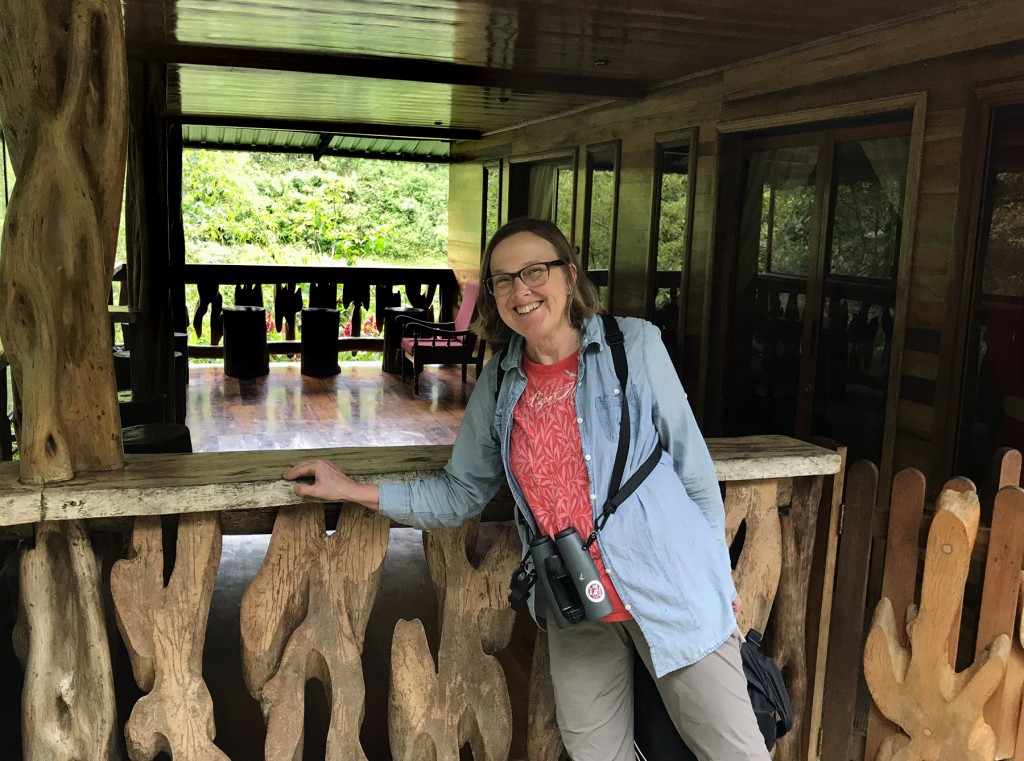
Jeanine at the Cabañas Cascada Rio Hollin porch. Note the expansive size, detailed woodwork, and polished floors.
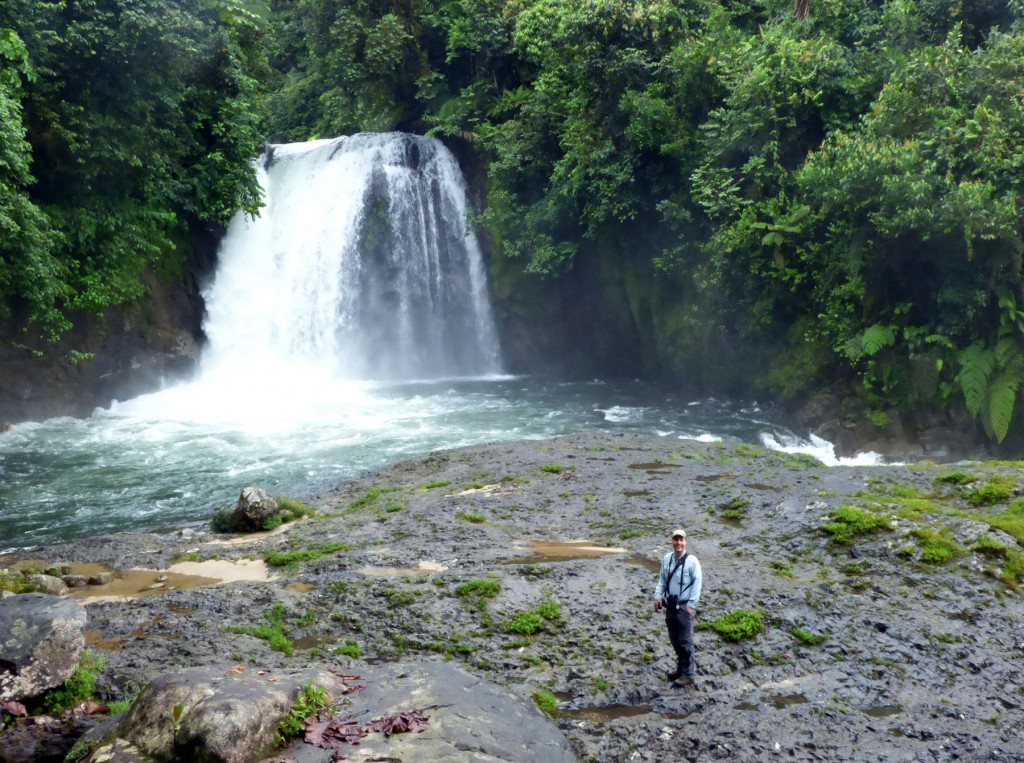
This waterfall view was just a few steps outside our cabina. I’ve seen videos of kayaks going over these falls. Amazing!
Day 1-3 Narupa Reserve. Because we live at sea level here in NJ, the trip was arranged such that we start at least part-way downslope and gradually work our way up the slope to avoid starting our trip with potential altitude problems (realize that Quito is 9,300 ft above sea level!). Fortunately, we arrived on schedule, got settled into our rental car (starting our lists with Vermillion Flycatcher and Sparkling Violetear in the rental lot), and within the hour we were driving over Papallacta Pass in horrendous fog and cold driving rain and towards our first destination, the Cabañas Cascada Rio Hollin and Narupa Reserve, fairly far downslope at 3,590 ft above sea level. Along the way we stopped to stock up on supplies (a 5-gallon jug of water and some snacks) and to sample roadside birds. In this way we found our first Smooth-billed Anis, Black Phoebes, and Southern Lapwings, and at the Cosanga River bridge we found our first Torrent Duck, one of my personal target species for the trip.
We arrived at Cabañas Cascada Rio Hollin with some trepidation, since we did not know much about it. That trepidation disappeared immediately, and we found this local business to be one of the delights of our trip. If you are planning a self-guided trip to the region, we recommend staying here. Don’t expect anything fancy; just a clean, simple place to say and authentic home-cooked local fresh food. The cabaña consists of a single building with two large rooms that can be rented separately; one room contains two queen-sized beds and the other has three twin beds. There is an expansive deck with polished wood, all positioned a mere hundred yards or so away from a ~30 ft waterfall. The family that owns the cabañas lives on the grounds and also operates the small Comedor Susanita, where we had all our meals. There is a small garden with hummingbird feeders that kept us busy watching the plentiful Many-spotted Hummingbirds interspersed with occasional Golden-tailed Sapphires, White-tailed Hillstars, Black-throated Brilliants, Gould’s Jewelfronts, and Wire-crested Thorntails. After a good night sleep to recover from our travels, we met our guide for the day, Mario Pilataxi (manager of Narupa Reserve) for breakfast at the comedor. Within a minute of finishing breakfast, Mario called out “Amazonian Umbrellabird”, as three of these cotingas landed in a nearby tree. They are not spectacular-looking birds, being all-black, but how can you not love seeing a bird with that exotic name? Great start!
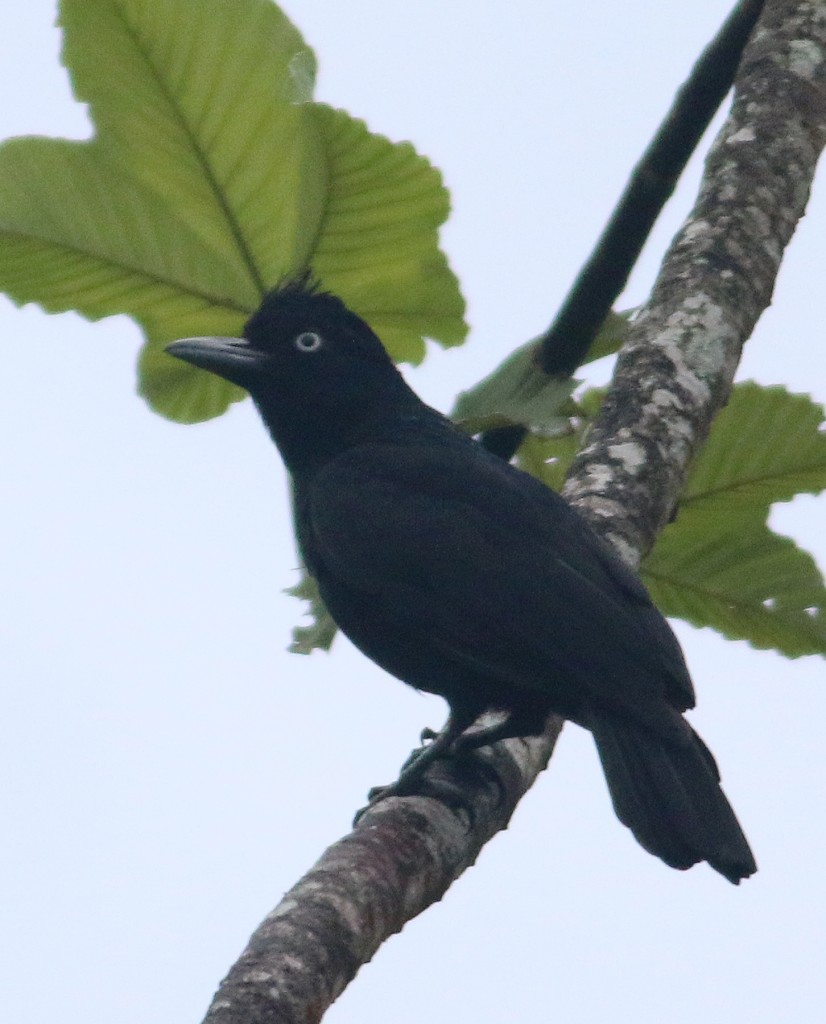
One of three Amazonian Umbrellabirds that we saw at close range near Comedor Susanita on two consecutive mornings.
We drove uphill ~ 0.5 mile to the Narupa Reserve entrance (run by the Jocotoco Foundation) and walked a short trail there and enjoyed their hummingbird feeders, which additionally hosted Gorgeted Woodstar and Fork-tailed Woodnymph. Here and at nearby stops we became acquainted with species that we would see multiple times over the next few days, including Violaceous Jay, Slate-throated Redstart, Silver-beaked Tanager, Squirrel Cuckoo, Yellow-tufted Woodpecker, both Russet-backed and Crested Oropendolas, Blue-and-Gray Tanager, and Ornate Flycatcher. In addition we were treated to a suite of flashy tanagers including Blue-necked, Paradise, Golden, Spotted, Bay-headed, Orange-eared, and Golden-eared, had a trailside approach by an Andean Cock-of-the-rock, saw Cliff Flycatcher at a traditional location, and enjoyed Red-headed Barbet, Buff-rumped Warbler, Many-banded Aracari, and many others. At our final location we spotted Channel-billed Toucan, Blue-naped Chlorophonia, and we had both Orange-breasted Falcon and Chestnut-fronted Macaw flying by in the same binocular view, prompting Mario to declare that Jeanine has mucha suerte to be seeing so many great species on her first full day in the tropics. I heartily agree; it was quite an impressive combination of birds to start the trip.
The next morning we walked and birded from the road before breakfast, re-finding Comedor Susanita’s Amazonian Umbrellabirds again near the bridge, along with another Cock-of-the-rock right in front of the comedor, a Highland Motmot in the garden, Yellow-tufted Woodpecker, Magpie Tanager, Violaceous Jays, and Short-tailed Swifts feeding over the river. After breakfast we bid a fond adios to Susanita, Leny, Angel, and the rest of the family and left for our next destination, Wildsumaco Lodge.
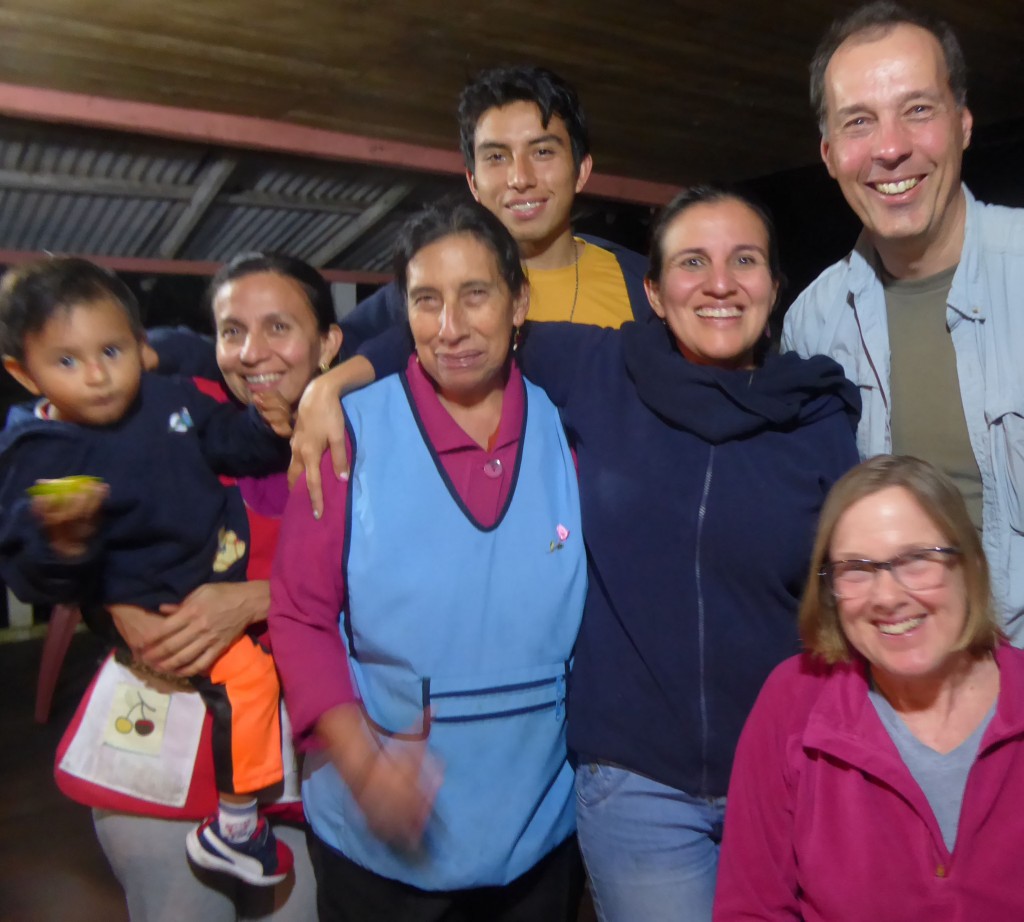
Saying good-bye to our host family at Cabañas Cascada Rio Hollin and Comedor Susanita. Gracias Leny y Susanita.
If you would like to stay at the Cabañas, which are extremely reasonably priced, contact Angel Crespo Vasquez at acrespovasquez@yahoo.com or click here.
Coming next: The adventure continues at Wildsumaco.
